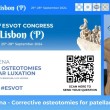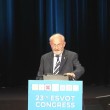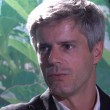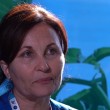Amy S. Kapatkin
DVM, MS, Dip ACVS
DVM Gregorio Araneta University Foundation, Philippines
Diplomat the American College of Veterinary Surgeons
MS in Clinical Research University of California- Davis
G.S-S- Do you recall the time in your life when you knew that you had to become a Veterinarian and why?
A.K- I am one of those people who always knew that I wanted to be a Veterinarian. According to my family, it was the only profession I ever spoke about since kindergarten. Although I grew up in an urban environment I loved horses and farm animals as well as house pets. I was not satisfied to just ride horses and own pets; I wanted to make their lives better. I enjoyed science and math in school and it was the logical profession with these interests.
G.S-S. Did some individual become you mentor, and if so who was it, and what effect did that individual have on your early career in your chosen profession?
A.K.- My father use to say he wanted to be a Veterinarian but he grew up in the depression and he had to go to a free school and could never fulfill his dream. He use to tell me to do exactly what I wanted to do in life and to never give up on achieving it. At Purdue University I worked at their Veterinary research farm and that cemented my desire to want to combine care of the animals with advancing the field. After returning from veterinary school. I worked in practice and asked Dr. Arnie Lesser if I could watch him in surgery, and I was hooked on orthopaedics after that. At the Animal Medical Center, Dr. Chris Thacher was my major surgery mentor and he inspired me to want to stay in a teaching environment. Dr. Gail Smith, at the University of Pennsylvania, taught me to critically evaluate the literature and surgical techniques. His lessons still influence how I practice and do research today. Dr. Ann Johnson was an inspiration to me because she was one of the few women at that time that was involved at ACVS and AO. She helped me start as an AO faculty member. Along the way, there were others that helped my career in ACVS and AO.
G.S-S. Is there a particular element of orthopaedics that fascinates you and have you designed a technique for a condition that you have shared, or would like to share, with readers of OVSS?
AK: Trauma is my favourite aspect of orthopaedics. Every case is slightly different and therefore fun. I modified an approach to the frontal area of the brain and a neurology resident (Glass) wrote up the case series when I was faculty at the University of Pennsylvania. (Article attached)
G,S-S. There is now a plethora of implants available for the treatment of fractures and other conditions of bone; the mind boggles at the changes over the last twenty years, Where do you see the advancement that will come in the future and what would you like to see?
A.K: I think modifications in the future will involve a lot of technology. Perhaps intraoperative advanced imaging techniques, robotic procedures that would lend it self to more minimally invasive procedures. I’d like to see good clinical trials in Veterinary medicine that can really help us determine what is best for each patient rather than many new procedures that do not help us prevent disease or really cure it.
















